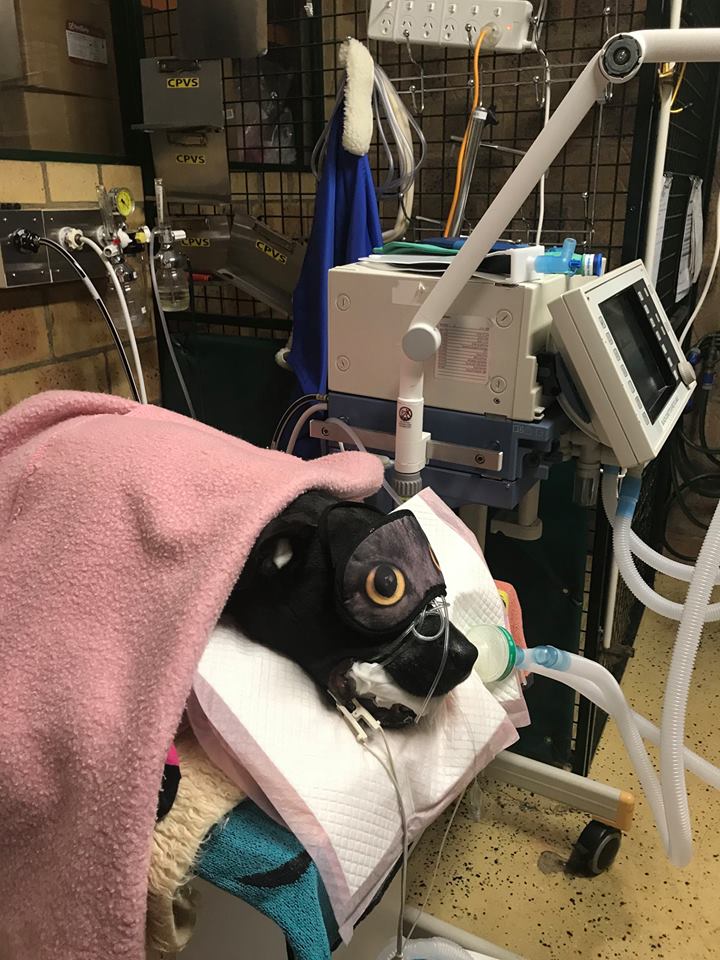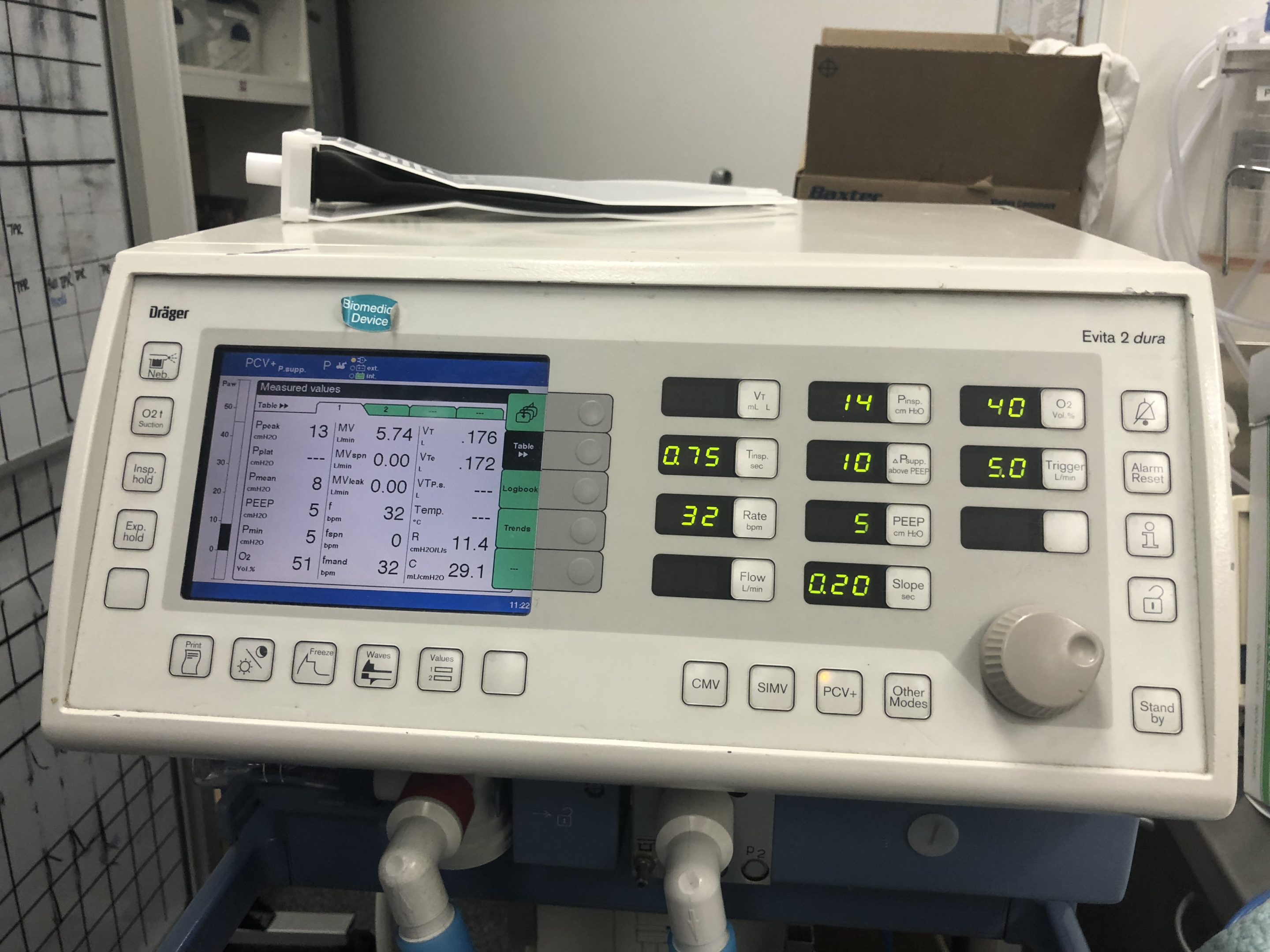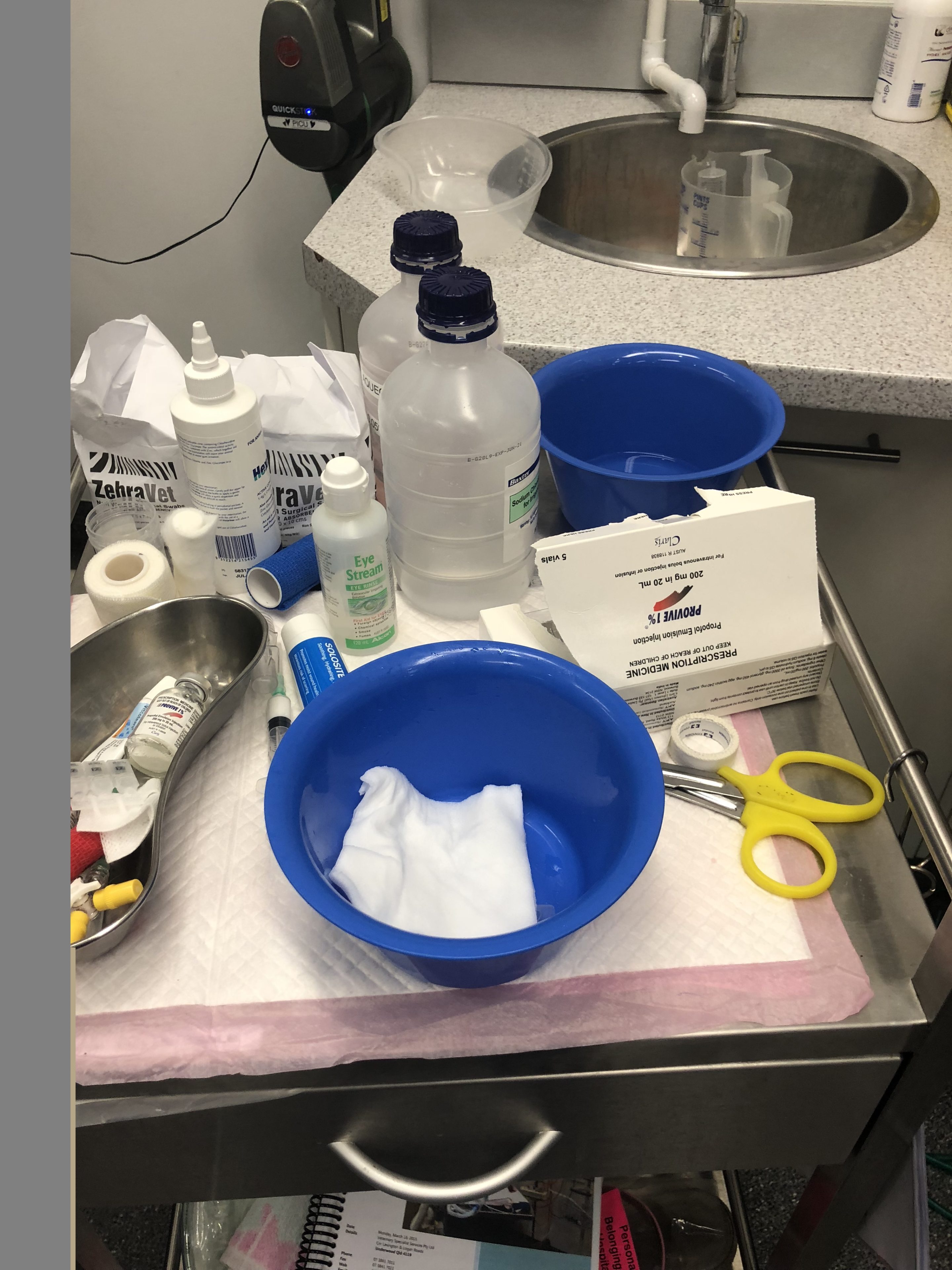One of the most important processes within the body is the ability to breathe. Mechanical ventilation is the act of assisting or controlling the patients’ ability to breathe. Although it is an important part of treatment in some cases, the process can cause additional stress. This should be taken into account before any patient undergoes this type of life support.
What is Mechanical Ventilation?
Similarly to human medicine and hospitals that are able to offer this service, the Pet Intensive Care Unit is capable of providing this type of care to animal patients. It is a type of life support and due to this, mechanical ventilation is known as one of the most intensive procedures a patient can endure while in our care. But what is it? In short, a patient is placed under an anaesthetic, while a machine replicates inhalation and expiration (breathing).
Why Would a Patient Need to Undergo Ventilation?
There are a fair few cases that may suggest an animal needs assistance in their breathing capabilities while they are recovering. These include, but are not limited to:
> Heart or lung disease
> Snake envenomation and,
> Tick paralysis
Basically, any situation where the body is either unable to expel accumulated carbon dioxide, maintain adequate oxygen saturation, or unable to move oxygen efficiently and effectively into and out of the lungs, can suggest the requirement for ventilation.
When would we consider ventilation?
Patients that are in respiratory distress are monitored closely in our Pet ICU and if we suspect mechanical ventilation may be required, a plan is made. If we proceed, the patients are placed under a general anaesthetic and attached to a ventilator machine. There are a number of settings to choose from and the decision is made based on the patient. All ventilators are adjusted to the individual and no two patients are the same. At times, patients require complete controlled ventilation, in which case the machine performs all the breaths for that animal. In other situations, for example, when the animal can still partially breathe for itself, or at least has the ability to inspire/expire oxygen, assisted ventilation can be utilised.
The severity of the patients illness/disease, can determine how long they are to remain on the ventilator for. Some may only need as little as 12-24 hours, whereas others that have multiple disease processes, or have complications, may need to be ventilated for a number of days. There is no definitive time frame when a patient requires this type of life support.
When a patient is ready, they are ‘weaned’ over a number of hours with constant monitoring to ensure adequate, spontaneous breaths occur. Sometimes, patients can fail weaning, as they are still too weak or paralysed to maintain an adequate level of breathing. In these cases, they are placed back onto the ventilator until a later time.
Nursing of the ventilated patient is intensive. In the Pet ICU, our patients’ vitals are recorded hourly and trends monitored to pick up any changes.
When a patient is undergoing this type of life support, they do not perform normal bodily functions. It is these cases that often require bladder catherisation for comfort and cleanliness, eye lubrication or contacts to prevent ulceration, mouth care to prevent ulceration and mouth sores, physiotherapy to prevent muscle fatigue, and medications depending on the initial cause or subsequent problems, such as aspiration pneumonia.
Our vets and nurses regularly undergo training to ensure they are up to date with the latest information regarding ventilation. The Pet Intensive Care Unit prides itself on providing the highest standard of care for ventilated patients. They generally require one-on-one nursing care and in some cases are overseen by a number of veterinarians. Whilst the process of mechanical ventilation is expensive and intensive, these cases are one of the most rewarding within the Pet ICU. There have been many patients that have left the Pet ICU post ventilation, that would not have survived without it and this is one of the reasons that the Pet ICU aims to have the highest skill level when it comes to these (and all) patients that enter our doors.
If your pet is ill or injured, contact your closest Animal Emergency Service hospital or your local vet immediately.



